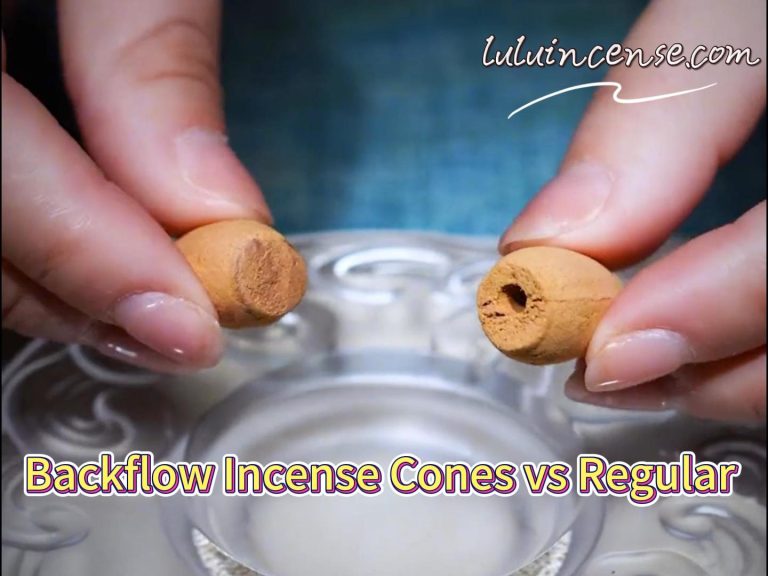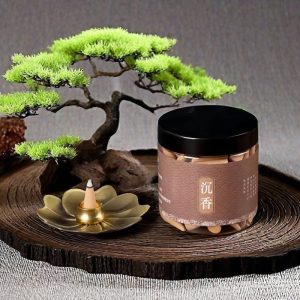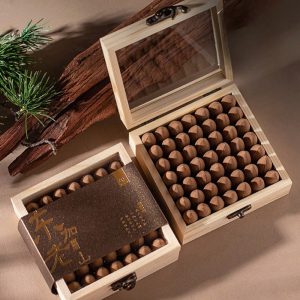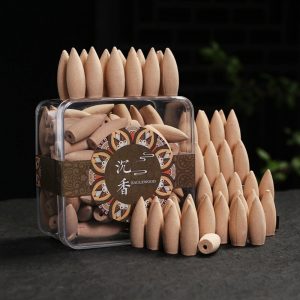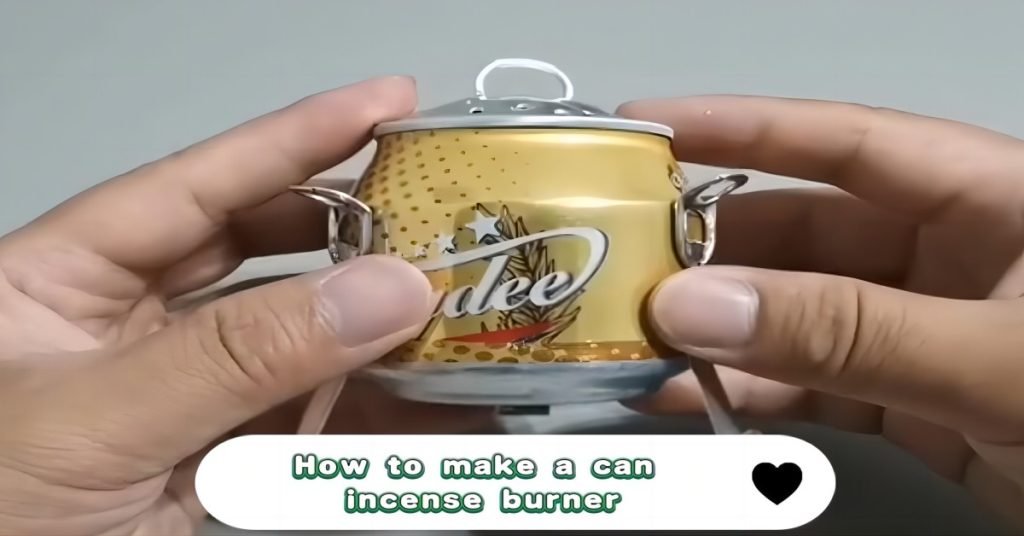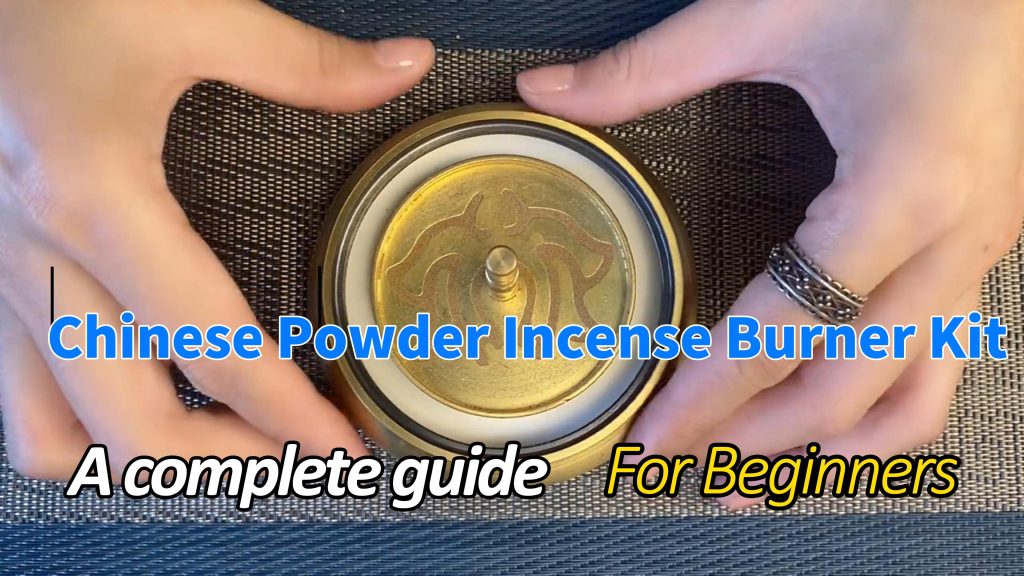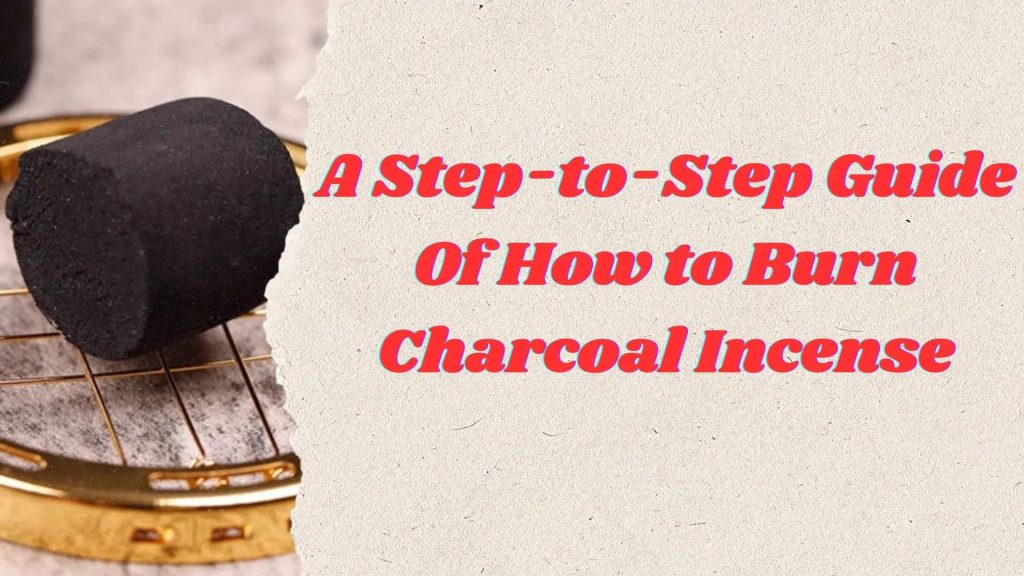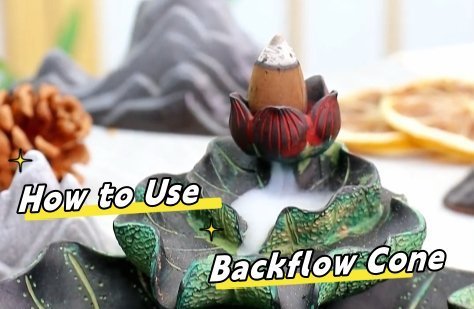Introduction
Incense cones have long been used for their soothing aromas, creating a calm and relaxing environment for meditation, yoga, or simply refreshing your space. However, with the rise of backflow incense cones, there’s now an exciting new way to experience both fragrance and visual appeal. While regular incense cones have been a staple for years, offering simplicity and consistency, backflow incense cones bring a mesmerizing visual element with their cascading smoke flow. This article will give instructions of what are the differencences between backflow incense cones and regular incense cones and offer adivce of how to select between them.
About Regular Incense Cones
Regular incense cones are one of the most traditional forms of incense, valued for their simple yet effective method of delivering fragrance. These incense cones are crafted from a mixture of aromatic plant materials, essential oils, and binders, pressed into a conical shape. When lit, the cone slowly burns, releasing a steady flow of fragrant smoke that rises upward, filling the surrounding space with soothing aromas
About Backflow Incense Cones
Backflow incense cones, also known as waterfall incense cones, are a unique type of incense designed to create both an aromatic and visual experience. Unlike regular cones, backflow cones are specially crafted with a hollow tunnel running through their center. This allows the smoke to flow downward rather than upward, creating a mesmerizing waterfall-like effect when used with a specialized backflow incense burner. The smoke flows through the burner’s channels, cascading gently to create a relaxing and visually appealing display, enhancing the atmosphere of any space
Backflow Incense Cones vs Regular Ones
So what are the differences between regular incense cones and backflow incense cones? The above video gives a detailed discussion of backflow incense cones vs regular incense cones. Here is a breakdown of their differences:
Difference in Design
The structural difference between backflow incense cones and regular incense cones is fundamental to their function. As is written in our article How to Make Backflow Incense Cones, compared with how to make incense cones, if you want a backflow incense cones, you will need one additional step, which is digging a hole at the bottom.
Waterfall incense cones feature a hollow tunnel running from the top to the bottom of the cone. This tunnel is crucial because it allows the smoke to travel downward through the cone and exit from the bottom. The design is intentional, created to direct the smoke in a specific path, producing the signature cascading effect that backflow cones are known for. This hollow feature differentiates backflow cones from any traditional incense cone.
On the other hand, regular conical incenses are completely solid. When ignited, the heat causes the smoke to rise naturally, following the convection of heated air, which leads the smoke to disperse upward into the environment. Without any hollow structure or special pathway for the smoke to travel, regular cones simply diffuse fragrance in a traditional manner. This solid, straightforward design is simpler but focuses solely on dispersing aroma, without any additional visual effects.
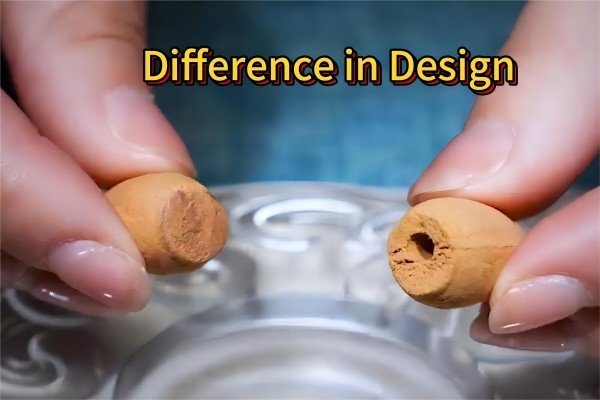
Difference in Smoke Flow
The smoke flow is where the experience between these two types of incense cones truly diverges. Backflow waterfall incense cones create a stunning downward flow of smoke, which makes them not just a source of fragrance but also a visual centerpiece. As the incense burns, the smoke is funneled downward through the hollow center of the cone and escapes from the bottom. This descending smoke often cascades over the surface of a backflow incense burner, which is designed with intricate paths or grooves to enhance the flow. The result is a beautiful, waterfall-like effect that is calming and meditative.
In contrast, regular incense cones release smoke that flows upward, moving naturally with the heated air. The smoke disperses freely into the air, filling the room with fragrance but without any specific direction or visual effect. This makes regular incense cones more practical for spaces where fragrance is the main goal, as the smoke tends to diffuse evenly throughout the room. The upward smoke is simple and functional, making regular cones more versatile for settings where the focus is entirely on the scent rather than on the aesthetic appeal.
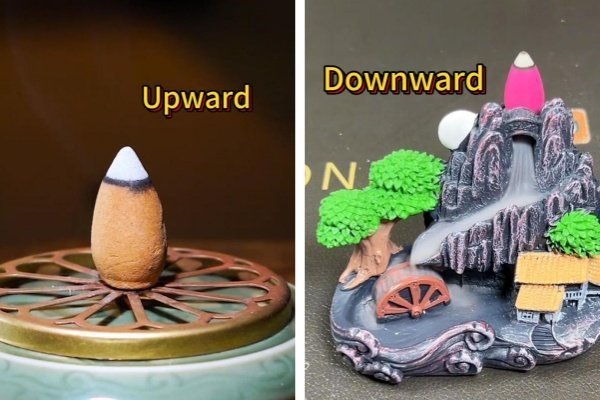
Differences in How to Use
The way you use backflow incense cones differs significantly from regular incense cones, primarily due to the smoke flow and the burner design. To use a backflow incense cone, you need a specialized backflow incense burner that is designed to guide the smoke downward. The cone must be placed on the burner in such a way that the hole at the bottom aligns with the opening in the burner. This alignment is essential to create the desired waterfall-like effect, as it allows the smoke to flow down through the burner’s channels. Backflow burners often feature intricate designs, such as steps or curves, which enhance the visual effect by directing the smoke in a smooth, mesmerizing pattern. Without the correct setup, the cone will not produce the intended downward smoke flow.
If you want to learn more, you can read our article How to Light Backflow Incense Cones and How to Use Backflow Incense Burner.
In contrast, regular incense cones are much simpler to use. They can be placed on virtually any cone incense burner or surface, as they don’t require any specific alignment for the smoke to flow upward. Once the tip of the cone is lit and extinguished, the smoke rises naturally, dispersing into the air without the need for any special positioning or burners. The main focus with regular cones is on the fragrance, and the burner’s design is typically functional, providing a surface to hold the cone securely and catch the ash as it burns
Difference in Usage Purpose
Due to their distinct design and smoke flow, the usage purpose of these two types of cones also differs significantly. Backflow incense cones are often chosen for creating a tranquil and meditative atmosphere, where both the aroma and the visual display of the smoke flowing downward contribute to the overall calming effect. The visual experience adds an extra layer of relaxation, making backflow cones ideal for settings where ambiance is as important as the fragrance itself.
Regular incense cones, on the other hand, are more commonly used in a variety of contexts, from religious rituals to aromatherapy, where the focus is primarily on the fragrance. The upward smoke is more straightforward and is typically used to fill a room with scent quickly and efficiently. Regular cones are perfect for casual, everyday use when the scent alone is the priority, without the need for any special burners or visual enhancements.
Which to Choose Between Them?
Regular Incense Cones
Pros
- Simplicity: Regular incense cones are easy to use and don’t require any special burners or setups.
- Variety of Scents: Available in a wide range of fragrances, making it easy to find a scent that suits your mood or setting.
- No Special Burners: These cones can be used with almost any incense holder, making them convenient for everyday use.
- Affordable: Generally, regular cones are more budget-friendly, with no need for additional accessories like specialized burners.
Cons
- Lacks Visual Appeal: While regular cones provide fragrance, they don’t offer the same visual experience as backflow cones.
- Traditional Smoke Flow: The smoke rises upward in a straightforward manner, which may not be as visually engaging if you’re looking for an aesthetic element in addition to scent.
Backflow Incense Cones
Pros
- Aesthetic Appeal: The cascading smoke effect creates a calming, mesmerizing visual, adding an extra layer of relaxation beyond the scent.
- Meditative Visuals: The downward smoke flow mimics a waterfall, making backflow cones ideal for those who enjoy a more immersive, meditative experience.
- Enhances Décor: These cones, when used with intricate backflow burners, double as decorative pieces, elevating the ambiance of your space.
- Same Fragrance Intensity: Despite the different smoke flow, backflow cones offer the same level of fragrance as regular cones, combining scent with aesthetic value.
Cons
- Requires Special Burners: To achieve the downward smoke effect, you need a specially designed backflow burner, which adds to the overall cost.
- Slightly More Expensive: Backflow cones, due to their specialized design and the need for a compatible burner, tend to be pricier than regular cones.
- Careful Placement Needed: Backflow cones must be carefully aligned on the burner to ensure the smoke flows downward properly, which requires a bit more attention during setup.
Conclusion
Choosing between backflow incense cones and regular incense cones ultimately comes down to your personal preferences and the experience you’re looking to create. Regular incense cones are perfect for those who prioritize simplicity and fragrance, offering a wide variety of scents without the need for specialized equipment. They’re affordable, easy to use, and ideal for quickly filling a room with aroma.
On the other hand, backflow incense cones add a unique visual dimension with their mesmerizing downward smoke flow, making them a great option for those seeking both fragrance and aesthetics. While they require a special burner and more careful setup, the calming and decorative smoke effect enhances the ambiance of any space, making them worth the investment for many users.
In the end, if you’re looking for a straightforward aromatic experience, regular cones will suit you well. However, if you want to create a more immersive, visually appealing environment, backflow cones offer a blend of fragrance and visual beauty that elevates your space to a new level of tranquility.
FAQ
No, you cannot convert regular incense cones into backflow cones. The key difference lies in the design—backflow incense cones have a hollow tunnel that runs through the center, which directs the smoke downward. Regular incense cones are solid, and their smoke naturally rises upward when burned. To achieve the backflow effect, you would need cones specifically designed for that purpose.
Yes, you can technically burn backflow incense on a regular burner, but it won’t create the cascading smoke effect that backflow cones are known for. When placed on a regular burner, the smoke will simply disperse into the air like regular incense. To get the proper visual effect, it’s important to use a backflow burner designed to channel the smoke downward.
Yes, you can use backflow incense in a regular burner, but it won’t function as intended. Without the proper alignment and structure of a backflow burner, the smoke will rise upward rather than flow downward. While the fragrance will still be released, you’ll miss out on the distinctive waterfall-like effect that backflow cones offer
No, backflow incense cones do not necessarily create more smoke than regular cones. The amount of smoke produced depends on the materials used in the cone rather than the design. The key difference is in the direction of the smoke flow—backflow cones guide the smoke downward, while regular cones let it rise upward.
No, regular incense cones and waterfall incense cones are not interchangeable. Regular cones can be used on most burners, but backflow cones require a special backflow burner to achieve the cascading smoke effect. While you can burn backflow cones on a regular burner, they won’t produce the desired downward smoke flow.
Not necessarily. The burn time for both backflow and regular incense cones is typically similar, usually ranging from 20 to 30 minutes, depending on factors such as the size, material, and airflow in the environment. The primary difference between the two is the smoke flow and visual effect, rather than burn duration. If you’re looking for longer burn times, choosing larger cones or specific materials can extend the burn time, but there’s no inherent difference between backflow and regular cones in this regard

